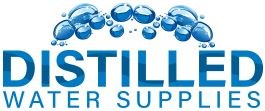Facts about Distilled Water
One of the most undeniable facts about distilled water is that it can cause a few arguments. The hottest debate about distilled water is "is it suitable for drinking on not?". There are some strong debates on the subject with benefits and drawbacks being raised for either argument. What is for sure is that more than two thousand years Caesar’s armies marched on distilled water and during World War 2 millions of allied soldiers in the European and Pacific theatres took their well-earned succor from drinking distilled water.
Setting aside that well worn argument, distilled water really comes into its own when used in industry; both light and heavy, scientific research, the hi-tech industry, laser imaging as wel as creating sterile environments in hospitals and the production of pharmaceuticals. In industry, distilled water can be produced in various purity levels to be used in a variety of tasks such as refrigerator systems, applications including industrial and domestic ironing equipment, car, truck and tractor batteries and even airplane batteries.
The metal plating industry are also very major users of distilled water to ensure that the plating process will be carried out in a very sterile environment. These are the mainstream uses for distilled water. However there are many other applications where distilled water or at least the distilled water process is called.
Since before the Second World War, distilled water has been produced and consumed in commercial and naval shipping. Some of these ships and even submarines, are mostly nuclear powered these days and can be at sea for months on end. Distilled water produced on board these ships can be produced either from seawater and even from recycled water produced on board. For that reason, the levels of distillation and purity have to be exceptionally high to protect the health of the crew.
Because of its fairly unique physical characteristics distilled water needs to be stored very carefully. The reason being is the through time distilled water is liable to absorb signifcant levels of carbon dioxide which will increase the levels of acidity in the water, reaching Ph levels of around four. This level of acidity will preclude distilled water from being stored in any form of plastic. If the distilled water is in reasonably small quantities then a reasonable compromise is for the water to be stored in glass bottles or containers. However glass containers can be acquire with capacities of up to up 30 litres which for the commercial user is hardly applicable.
Also it is a known fact that distilled water will eventually dissolve glass (although the process will take years). Known as solar driven condensation, untreated water is fed into a container tank with a clear plastic roof, that is totally exposed to the sun's rays. The rays, over a certain period of time, cause the water to gradually evaporate. As it does the steam is then fed into another container, till it vaporizes and is ready to be checked for levels of pureness.
Obviously very time-consuming but extremely cost effective the solar driven condensation method is a working alternative to any power driven method as long as the levels of purity required is not too high.
